DLTK's Blog
Packing for Chedoke Falls
May 2020
There are plenty of resources online for protocols and restrictions regarding park visitation and recreational activities during this pandemic. I have found that the Centers for Disease Control and Prevention's website has been particularly helpful for steering me clear of misinformation. You can click on this link for the quick and easy “dos and don’ts” of outdoor and recreational living as outlined by the CDC.
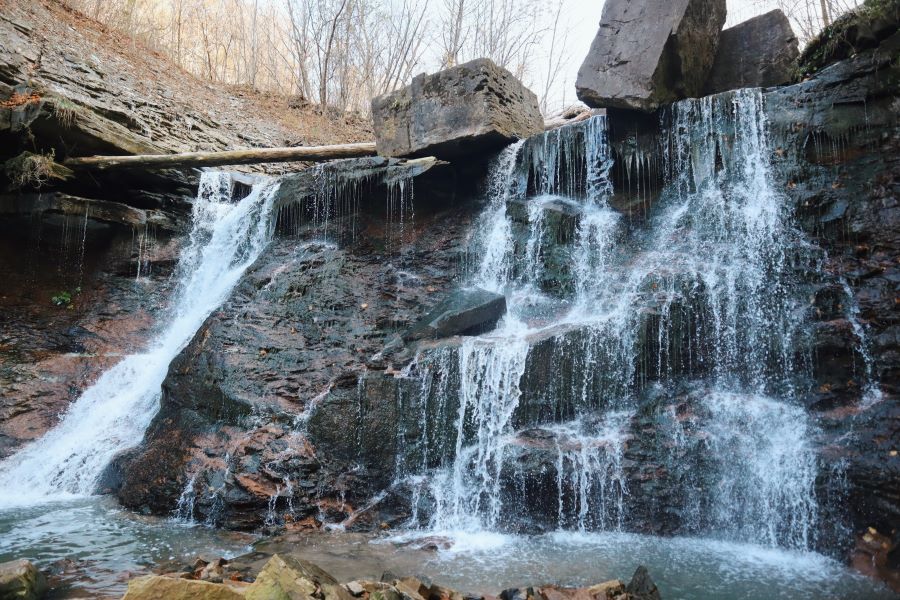
On the thread of what not to do… this week, my Instagram feed crossed over to the daily headlines: social media "influencers" have come under fire for the packing up and leaving major city centers during the 2020 pandemic. In one case, social media influencer, Naomi Davis, received criticism for blogging her RV trip post-COVID-outbreak. In another example, another blogger/Instagrammer Arielle Charnas found herself condemned as she fled to the Hamptons. Her story is particularly troubling, since she tested positive. Not to mention, New Yorkers were specifically asked to “stay home” amidst concerns that the city’s growing hotbed would spread quickly to other areas, particularly on the East Coast. A quick Google search of "influencers fleeing amidst COVID-19" turns up many of the same stories.
Griffin and I are in Hamilton, Ontario, Canada during COVID-19. Geographically, we are quite close to Toronto—Canada's largest city—and New York City. After reflecting on what some of these media headlines were implying, I became frustrated. I have seen some of the people in my social networks "flee" major city centers, like Toronto, for more secluded areas. And while many of these people probably would argue against anyone labelling their actions as "fleeing," this type of transplanting has become a significant trend in response to COVID-19 since mid-March. There is an urgency to connect with family members who need care during this time (oneself included). We might not, then, rush to write off everyone who has chosen to relocate to stay safe and survive. However, there have been many instances where people have decided to leave metropolitan centers without regard for the immense privilege these decisions carry and without recognizing the risks involved. (Among other things, these folks are broadcasting “off-the-grid” living all the while ignoring the cross-province/-state/-country long car ride or plane trip that it took to get them there). Some folks have even advertised themselves as “transplants” to their social media followers. To "flee" an urban core such as Toronto or New York for your newly-purchased cabin or second home on the East/West Coast or in the Hamptons, and then to broadcast that journey on social media, feels incredibly insensitive during the COVID-19 global health crisis. I predict that we will see more significant critiques of the classism behind this "fleeing" (transplantation) trend as we reflect on our collective actions and responses in these moments of crisis.
With all of this said, if you live in a city center and if you do not have access to a more private green or public space, I highly recommend that you check with the resources that your city has provided. For example, the City of Hamilton gives updates online for what remains open to the public as well as information about disinfecting procedures and protocols. Luckily for me and Griffin, there are a few quiet and gorgeous walking spots within short distance from our home. We have been on quite a few hikes during our relationship, so we feel fortunate to be able to continue with more minor outdoor activities within our radius during this indefinite period of isolation. Hamilton is relatively cold, wet, and mucky lately. Some days we have 20°C, and other days it is *literally* snowing. With the current colder weather, we encounter very few people. (And everyone we have seen is always very vigilant about the 2-metre boundary!)
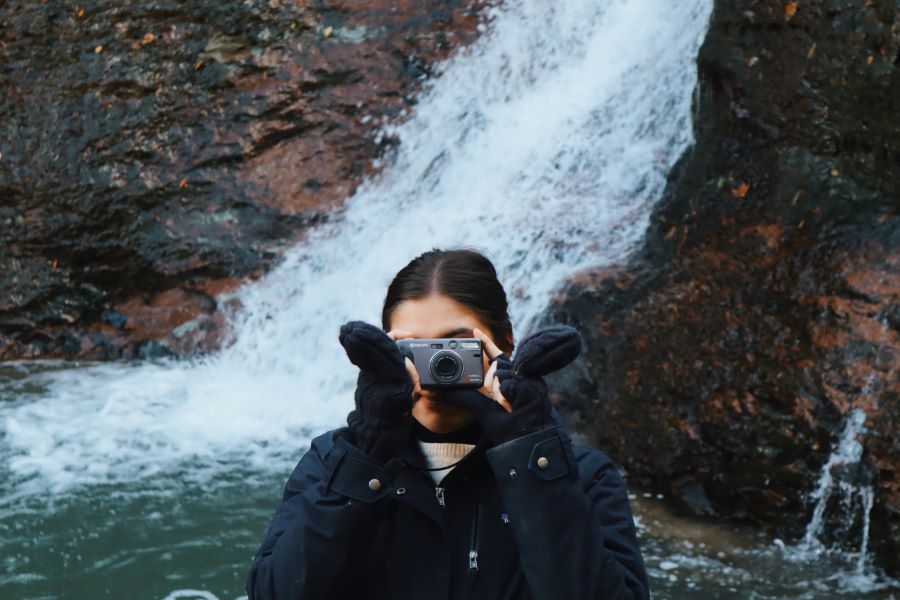
I wanted to follow in my Mom’s and sister’s footsteps, so I decided to post what I pack for a simpler and shorter time outside. You can view my Mom’s post on "Dressing the Family for a Hike," and Kaitlyn’s post on "Packing for a Day Hike," if you are lucky enough to live near an appropriate hiking space or if you are planning for future trips after lockdown has ended. Even though a lot of the trails available in Hamilton are quite short, it is hugely important to always stay prepared!
This past week, Griffin and I decided to try out Chedoke Radial Trail: this is a trail I want to recommend here because it can either lead you along nicely paved ramps and walkways towards waterfalls, or, depending on how creative you’re prepared to be, this trail can take you up steeper paths towards other mysteries (and more waterfalls). It is also literally right beside our house. We had some serious fun (finally!) figuring out how to make it to the final cascade found in the Chedoke Falls chain.
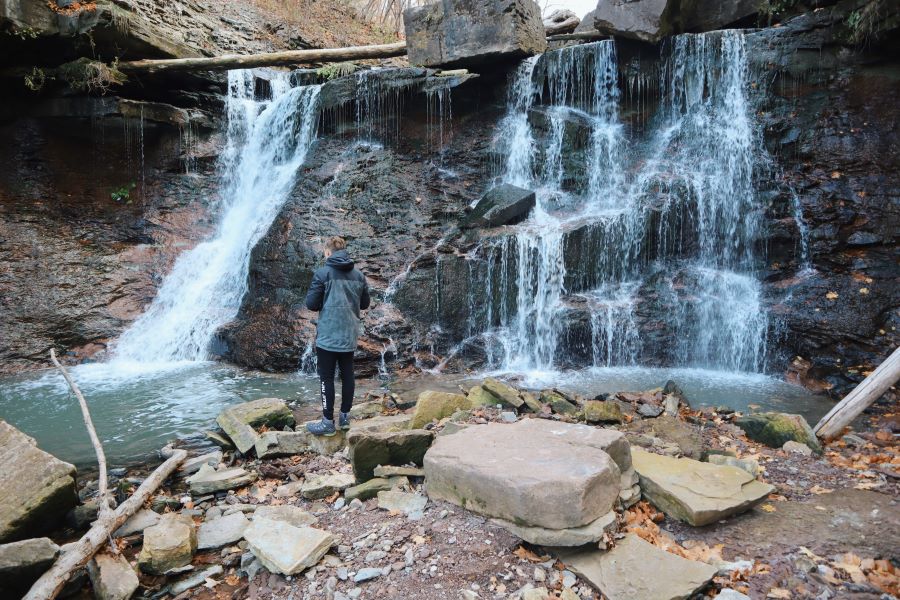
To be clear, as with many hikes, the Chedoke Radial Trail offers serious inclines and can get slippery. Weather can be seriously unpredictable. Griffin and I spent a couple of hours hiking in and out of this path, and I would presume other people have spent much longer. Try to remember to always bring appropriate (and extra) gear with you: even if it looks like the weather is not going to bring conditions that reduce visibility (whether it be by rain or darkness), it can become less than ideal out there!
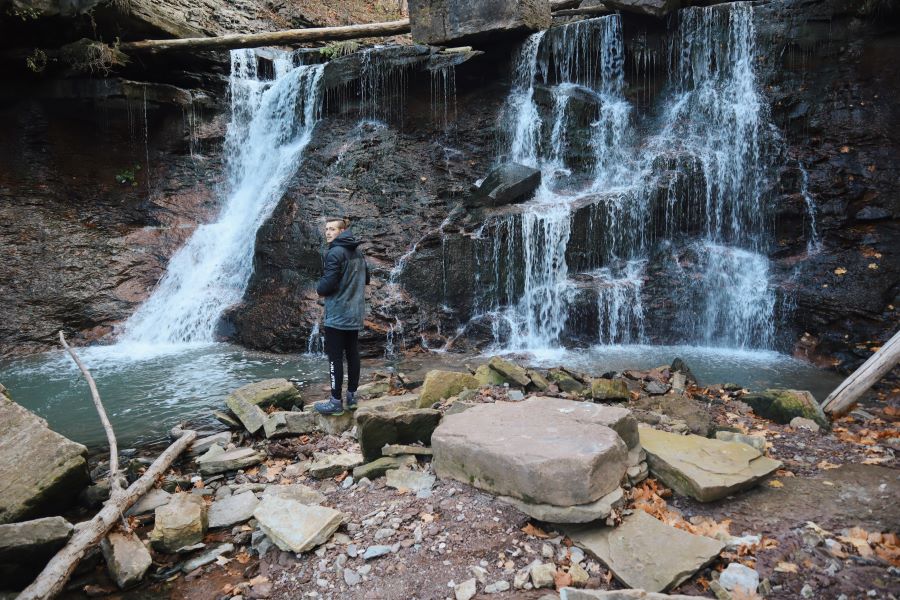
WHAT TO WEAR
Check out our other posts for more on what to pack for a day hike! Below is a detailed list of what I brought with me for this outdoor time in Hamilton. Outside, it was no warmer than 6°C, so I am thankful that I grew up with such expert hikers/campers in my family! Thank you, Kaitlyn and family!
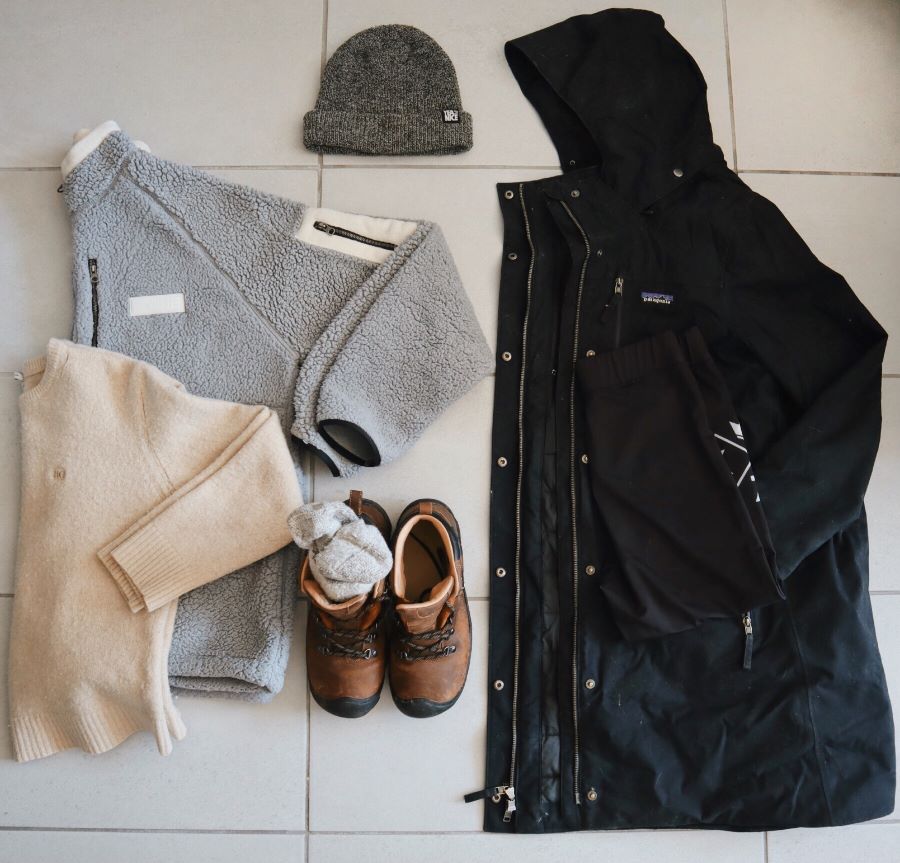
-
Rain or Snow Gear (jacket and pants)
— Depending on the time of year, an outer shell for rain/snow protection is crucial. -
Layers!!
— Layers, layers, and more layers! Fleece is your friend. Cotton is not. I always bring an extra Under Amour heat gear long sleeve to roll in away in my daypack! Wear more layers than you think you will need and make space in your daypack(s) for some shedding! -
Hiking Boots (waterproof!) and Extra Wool/Hiking Socks
— I wear my hiking boots on nature walks. Make sure to get waterproof hiking boots if you're going to make the purchase (I am not sure why you would not get waterproof hiking boots). Much like my spandex Under Armour, I always bring an extra pair of socks with me. I packed wool socks since I was wearing plain white socks earlier this day. -
"Weather Appropriate Extras"
— I liked Kaitlyn’s phrasing on this, so I kept it. For our daytrip @ Chedoke Falls, “weather appropriate extras” meant fleece fingerless gloves, extra mittens, and a toque. We also packed two baseball caps and our matching sunglasses (!!) in case the sun came out.
WHAT'S IN MY BAG
Think of this section as an ode to Kaitlyn's blog post. Think of this, also, as the hiking blogosphere’s version of YouTube’s “What’s in My Bag” trend. Basically, if you were to stop me on a trail, this is the neat version of what you would always find in or on my daypack.
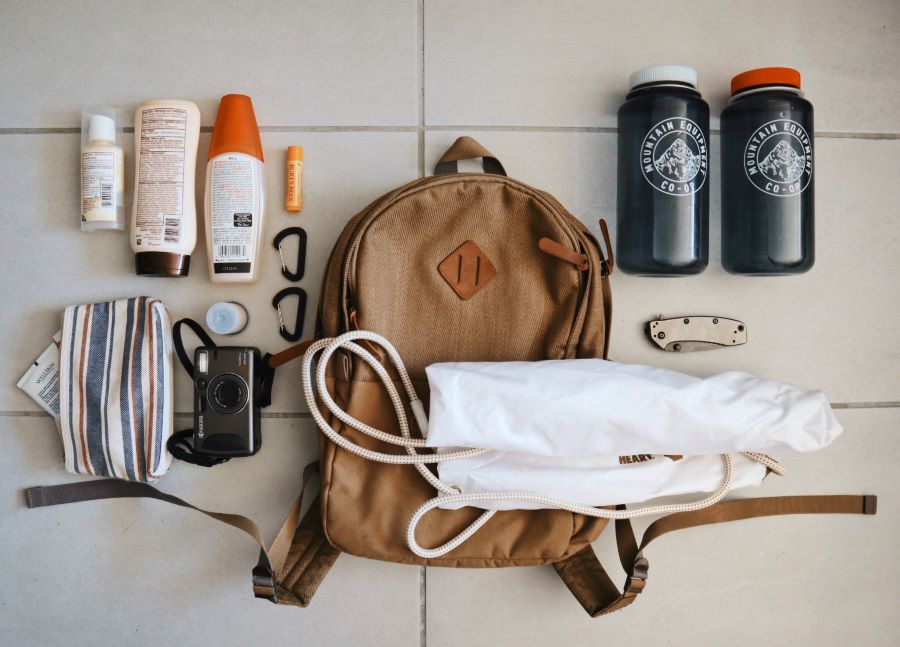
-
The Day Pack, Itself? Disappointing For Sure...
— I would not necessarily rave about nor recommend that you bring the types of bags that we did on our hiking daytrip this time ‘round. You can look to Kaitlyn’s post for more “official” daypack options (Please, please do this).
— However, I wanted to be realistic about the grab-and-go nature of our every day. So, I thought I would include a more casual option. Here we have it, folks: a basic backpack and its accompanying drawstring friend! -
Basic First Aid Kit (with some COVID-related info)
— I always, always, always have a first aid kit on me. I keep a large kit in the trunk of my car as well as in my larger trail packs for emergencies. Like Kaitlyn says, “if you are going to be near emergency medical services (for example, walking in a city park) having a small kit with some band aids, gloves, a CPR face mask, and emergency blanket is still a good idea.” And during this COVID-19 lockdown, I would also recommend you bring along disinfecting hand sanitizer and a cloth face mask.
— Bring a disinfectant sanitizer with you. According to the CDC, “Cleaning with soap and water removes germs, dirt, and impurities from surfaces. It lowers the risk of spreading infection. Disinfecting kills germs on surfaces. By killing germs on a surface after cleaning, it can further lower the risk of spreading infection."
— Bring a cloth face mask with you in case of emergency. The CDC states, “In light of new data about how COVID-19 spreads, along with evidence of widespread COVID-19 illness in communities across the country, CDC recommends that people wear a cloth face covering to cover their nose and mouth in the community setting. This is to protect people around you if you are infected but do not have symptoms.” Animal Protection
— While I am used to hiking in the Rocky Mountains of Alberta or British Columbia and bringing a canister of bear spray with me, I do not carry bear spray in the city. As Kaitlyn says, “one very important note is that some gear (like bear spray) is illegal to carry in cities and towns because it is considered a weapon, so make sure to clarify where you can and cannot carry these items.”-
Carabiners
— If you do not have carabiners in your life, consider this your 11/10 recommendation from Tash. I have lost count of the number of carabiners I have in my house (these have been staple stocking-stuffers for years now!). Bring a few along with you no matter the length of your hike. ~So many things to hang, so little time!~ Water Bottles
— Around this time last year, we decided to make a trip to Mountain Equipment Co-op with Kaitlyn and Callum. We grabbed four Nalgene water bottles for me and Griffin upon Kaitlyn’s recommendation. We all try our best to drink two of these each per day. And we always bring our many bottles with us no matter how short our hike will be.
— “It is very important to bring a minimum of 2 litres of water per person and have water breaks every 15-20 minutes. If you are hiking with younger kids, water is something that they can carry on their own and they may need slightly less water since they are smaller.” – Kaitlyn-
Sun (!!) and Bug Protection
— Always wear and reapply sunscreen! Especially on your face! Get a face-specific sunscreen and apply it over your moisturizer. Chapstick with SPF is your friend! Remember to research how often you should be reapplying your sunscreen based on the SPF you have available to you—and bring extra sunscreen with you, obviously.
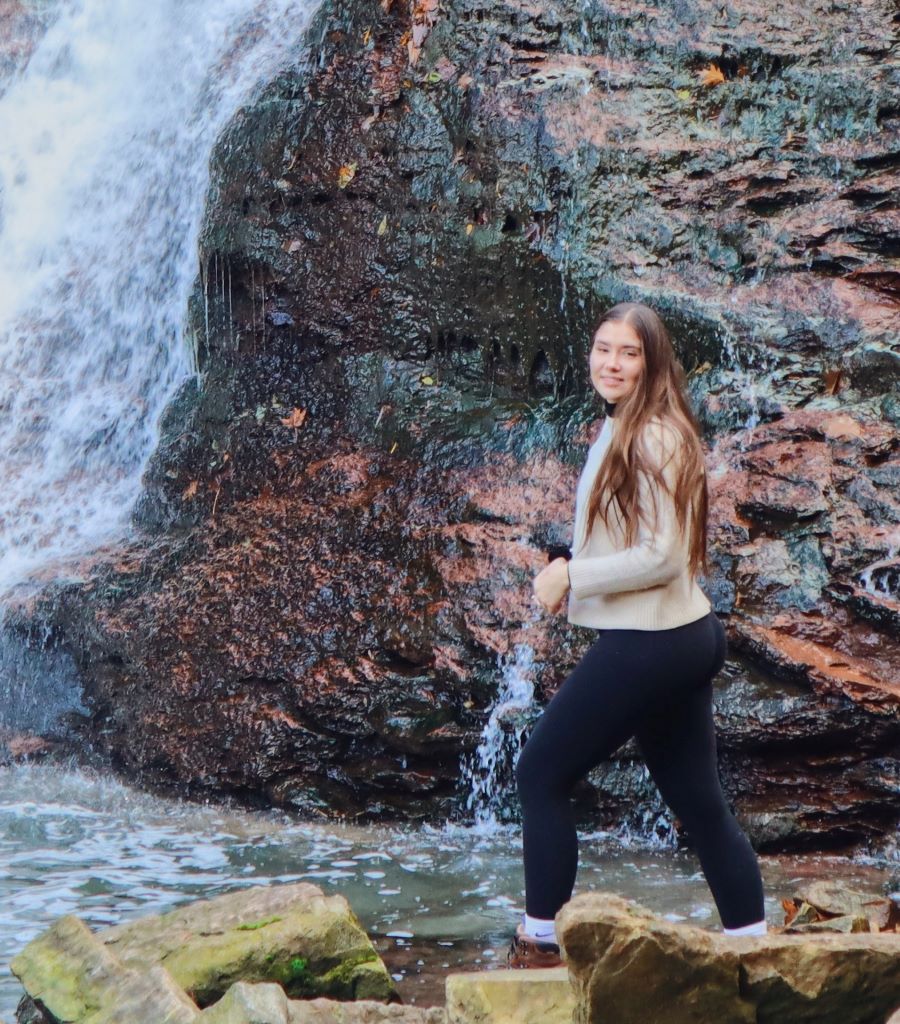
— Research where you live and make sure you know the types of bugs in your area, so you can prepare if you need to. And if you are bringing pets along with you, make sure they have the appropriate vaccinations for the bugs in your area, too! In the Rockies/Kananaskis, we get bug spray that has in-built tick repellent! For Hamilton, we used a more basic bug spray.
— Important from Kaitlyn: "When you apply sunscreen and bug spray you need to make sure that you apply the sunscreen half an hour before the bug spray otherwise it won't absorb into the skin."
WHAT TO SNACK ON
For our pandemic walks, we usually pack apples, energy bars, and a larger meal held in Tupperware. We made pasta salad for this week’s Hamilton neighborhood hike!
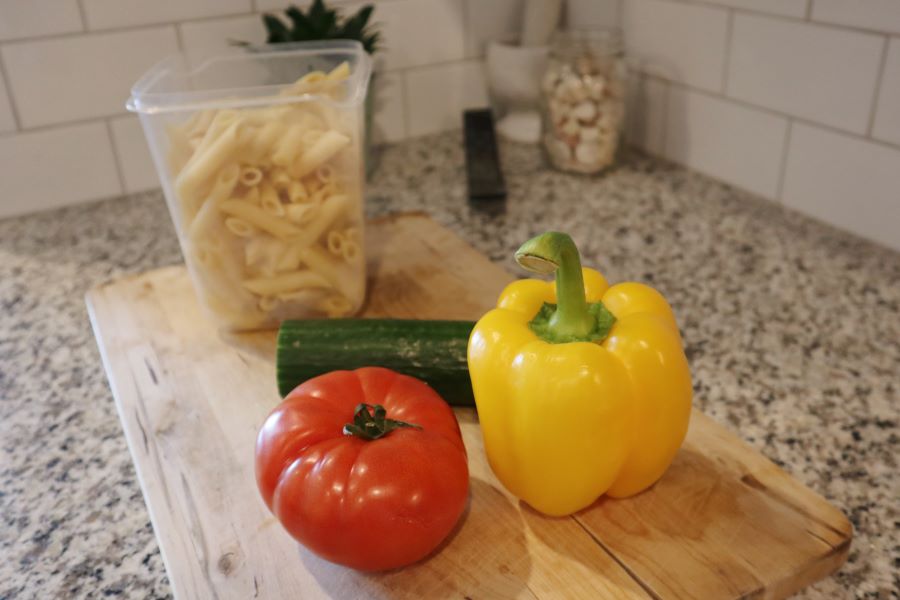
We had some penne left over from a pasta dish we had made a day or two earlier, so we took those scraps, added some tomato, yellow bell pepper, and cucumber, and homemade Greek dressing, and made a nice work break/daily stroll meal!
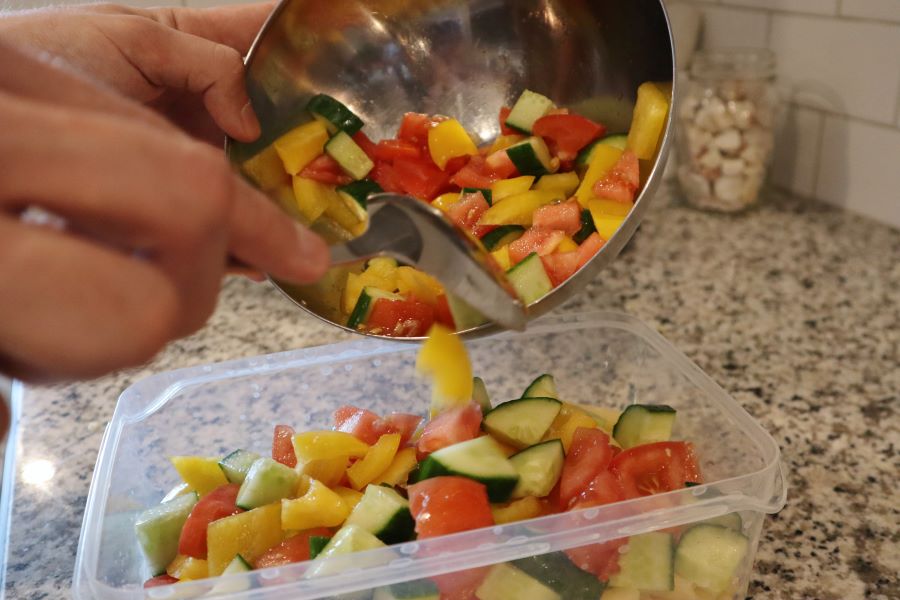
As Kaitlyn writes in her post, "When I am packing food for a hike I try my best to limit the garbage because it is important to be 'leave no trace' when out in nature. This means that everything you bring into the wilderness, you also have to bring out." Even if you're in a city, you obviously still need to be mindful of the space you're taking up outdoors. Even if you're taking food outside for a small walk in the city, it is still good to take Kaitlyn's advice and "pack out things like apple cores or little bits of dropped food; just because they are compostable doesn't mean they biodegrade quickly."
Enjoy your outdoor experiences, and pack smart!
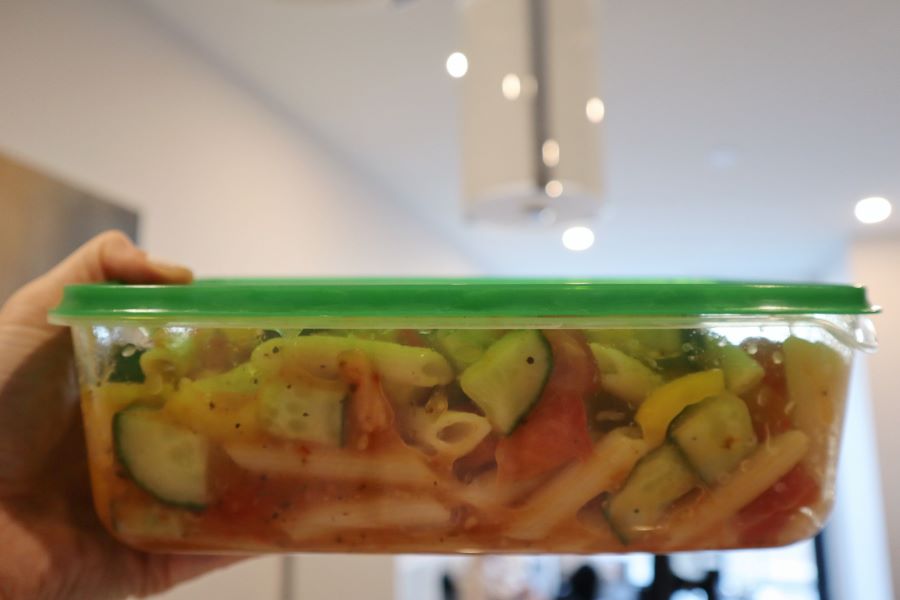
I think it is safe to say that Griffin and I are thanking our past selves for choosing to move where we did in Hamilton because we'd be close to a lot of great parks and other outdoor spaces within the city (including a currently closed tennis court right beside our house... super sad right now!). If you are like us and you do not have a backyard (or if your building's public area is rightfully closed until further notice), remember to check-in with yourself. For a lot of people (myself included), time outdoors is feeling pretty crucial. A walk around the neighborhood or to a nearby path/trail (in your zone!) might be what your body and mind need.
It also might not be, and that's OK, too! Whatever your idea of unwinding might be, I hope you enjoyed reading about some of our day-to-day leisurely activities. In theory, working from home wouldn't be much of a change for me, a graduate student; however, I saw a tweet from @juliaferraioli that said: "I've been working remotely for 2.5 years. The past 2.5 months have left me more *exhausted* than ever before. This is your reminder that you're not working remotely. You're working remotely during a global health crisis." I am moved by messages like Ferraioli's because I think there is a ton of very weird social pressure right now to look and feel productive. The demands of possible projects, side jobs, and work, work, work might = "success" for some but might read like toxic energy for others. If a walk outside or a shower is all you can muster, I think we should be celebrating those successes more loudly at a time like this.
Recipe: Dressing/Marinade for Hike Snacks
Ingredients:
- 6 tablespoons red wine vinegar
- 6 tablespoons olive oil
- 3 or 4 tablespoons lemon juice
- dash of Tobasco (I also add dashes of Piri Piri sauce and Cholula hot sauce!)
- dash of Worchestershire sauce
- 2 or 3 cloves of garlic, minced
- 1/4 teaspoon of garlic salt
- 1/4 teaspoon of pepper
- 1/4 teaspoon of oregano + rosemary mix
Directions:
- Mix all ingredients in a large bowl with a whisk.
- You can pour this over salad/meat/tofu (an added bonus is that, like most dressings or marinades, this is a very simple recipe to double or triple in size). I like to use this as a marinade for chicken, especially, and I think it also tastes excellent over a greek-style pasta salad with some feta and olives!
- For best results, I let the dressing marinate with whatever I am pairing for at least 6 hours prior to serving.
Disclaimer: As ever, everything said in this post are my own thoughts and opinions. I haven't been given any compensation for the ideas or information that I share here.
 About Tasha:
About Tasha:
I am the "T" in DLTK! In my spare time, I love to hike, read poetry, and hang out with my two cats. You can connect with me here.